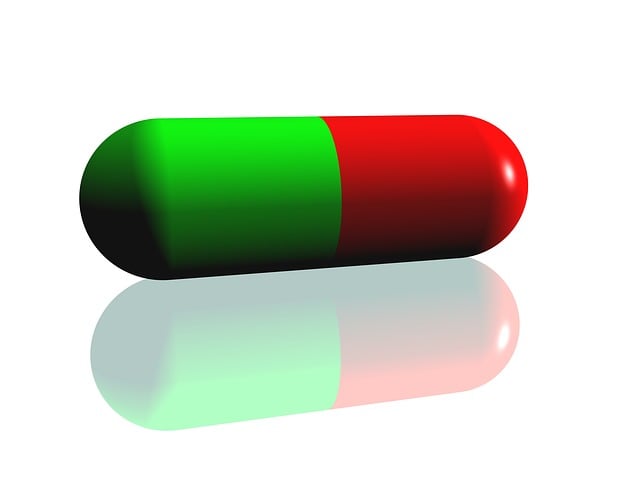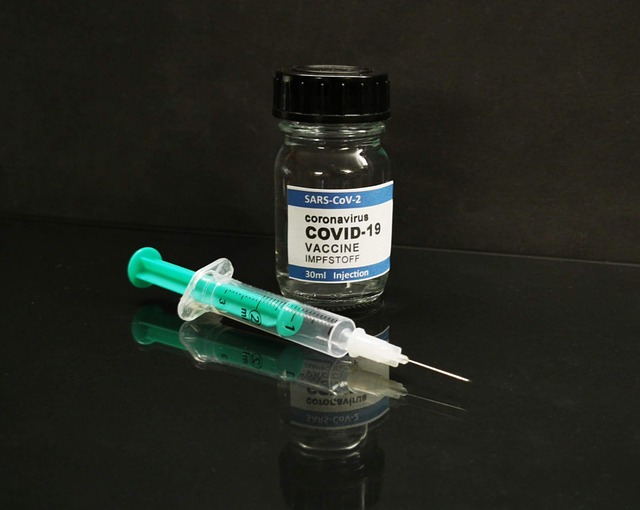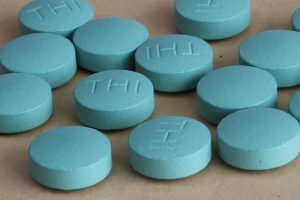Semaglutide, an effective hormone mimic for type 2 diabetes treatment, is dosed weekly, with initial low doses titrated up based on individual patient responses. Optimizing its regimen considers age, weight, kidney function, and medical history. The standard approach involves gradual dose adjustments, starting from 0.25 mg to 1.0 mg weekly via subcutaneous injection. Regular monitoring and follow-ups are crucial for achieving balanced blood glucose control while managing side effects. Special considerations are needed for pediatric and elderly patients due to developmental, renal, and hepatic differences. Enhancing patient adherence through education, reminders, and flexible dosing options is key. Future research trends focus on personalized dosing based on unique patient characteristics, aiming to revolutionize diabetes management with more precise, patient-focused treatments.
“Unraveling the Standard Dosing Regimen for Semaglutide: A Comprehensive Guide. Semaglutide, a glucagon-like peptide-1 receptor agonist, has emerged as a potent therapy for Type 2 diabetes and obesity. This article delves into the intricacies of semaglutide dosing, covering patient characteristics influencing dosage, initial and titrated regimens, injection techniques, monitoring guidelines, and special considerations for pediatric and elderly patients. Explore strategies for long-term compliance and future trends in personalized dosing to maximize its therapeutic potential.”
Understanding Semaglutide: A Glucagon-Like Peptide-1 Receptor Agonist

Semaglutide is a medication that mimics the action of a natural hormone called glucagon-like peptide-1 (GLP-1). It functions as a receptor agonist, meaning it binds to and activates specific GLP-1 receptors in the body. This drug plays a crucial role in managing blood sugar levels by stimulating insulin secretion when blood glucose is high and suppressing the release of glucagon, which helps reduce blood sugar.
Understanding semaglutide’s mechanism is essential when considering its dosing regimen. The standard semaglutide dosing involves administering a specific amount subcutaneously, typically once weekly. The dosage is tailored to individual patient needs, taking into account their blood sugar control and potential side effects. This medication has shown effectiveness in improving glycemic control in people with type 2 diabetes, making it a valuable tool for healthcare professionals in the treatment of this chronic condition.
Indications for Semaglutide Therapy: Type 2 Diabetes and Obesity

Semaglutide therapy is primarily indicated for the treatment of Type 2 diabetes and obesity. In the case of Type 2 diabetes, semaglutide improves glycemic control, helping to lower blood sugar levels. It does this by mimicking the effects of the hormone GLP-1, which stimulates insulin production and inhibits glucagon secretion, leading to better blood sugar management. For individuals with obesity, semaglutide assists in weight loss by reducing appetite and increasing feelings of fullness, making it a valuable tool for those looking to achieve a healthier body weight.
The standard dosing regimen for semaglutide is crucial in maximizing its therapeutic effects while minimizing potential side effects. Typically, patients begin treatment with a low dose, which is then gradually increased over time based on individual responses and tolerance. This stepwise approach allows the body to adapt to the medication’s actions, ensuring optimal efficacy and safety during semaglutide therapy.
Factors Influencing Dosing: Patient Characteristics and Medical History

The optimal semaglutide dosing regimen can vary significantly based on individual patient characteristics and medical history. Factors such as age, weight, kidney function, and other comorbid conditions play a crucial role in determining the suitable dosage. For instance, older adults may require lower doses due to potential age-related changes in drug metabolism. Patients with reduced kidney function might need dose adjustments, as semaglutide is primarily eliminated by renal routes. Additionally, medical history, including previous medication responses and any current treatments, can influence the recommended semaglutide dosing.
Understanding these variables is essential for healthcare professionals to individualize therapy. Patient-specific factors ensure that the chosen semaglutide dose optimizes treatment efficacy while minimizing potential adverse effects. Therefore, a thorough assessment of each patient’s unique profile is necessary before initiating semaglutide therapy, guiding the prescription of the most appropriate and safe dosing regimen.
Standard Dosing Regimen: Initial Dosage and Titration Procedures

The standard dosing regimen for semaglutide begins with an initial low dose, typically 0.25 mg or 0.5 mg, administered subcutaneously once weekly. This initial phase allows the body to tolerate the medication and adjust accordingly. Over a period of several weeks, the dosage is carefully titrated upwards by medical professionals, generally increasing by 0.25 mg or 0.5 mg intervals, depending on individual patient responses and specific treatment goals.
The titration process involves close monitoring of adverse effects and metabolic responses. Regular follow-up appointments are crucial to assess the effectiveness of the dosage adjustment and make informed decisions about further changes. This structured approach ensures optimal semaglutide dosing, balancing the medication’s benefits for weight management or type 2 diabetes treatment against any potential side effects.
Administering Semaglutide: Injection Techniques and Frequency

Semaglutide is administered via subcutaneous injection, typically once weekly. To ensure accurate and consistent dosing, it’s crucial to use proper injection techniques. Patients or caregivers should rotate injection sites within the abdominal, upper thigh, or lower arm areas to minimize tissue irritation. The recommended dose for semaglutide varies based on the treatment indication, starting from 0.25 mg up to 1.0 mg weekly. It’s essential to follow the prescribed dosage and not increase or decrease the dose without medical supervision.
The injection frequency ensures steady drug levels in the body, promoting its efficacy. Patients should adhere to the scheduled dosing days to maintain optimal blood sugar control. Additionally, proper storage of the medication, typically in a cool, dry place, is vital to preserve its stability. Always consult healthcare providers for personalized instructions and to address any concerns regarding semaglutide administration techniques and frequency.
Monitoring and Adjusting Dosage: Blood Glucose Control and Side Effects

Effective semaglutide dosing requires ongoing monitoring and adjustments to achieve optimal blood glucose control while managing side effects. Regular blood sugar readings are essential to gauge the medication’s impact and make necessary dosage changes. Healthcare providers typically recommend frequent testing, often multiple times a day, especially during the initial stages of treatment. This meticulous tracking allows for precise tailoring of semaglutide doses, ensuring they align with individual patient needs.
Side effects, while common, should not deter patients from adhering to the semaglutide regimen. Nausea, vomiting, diarrhea, and constipation are typical gastrointestinal issues that may arise. If these symptoms persist or significantly impact daily life, a consultation with a healthcare professional is advised. They can provide guidance on managing side effects and, if needed, adjust the dosage to improve tolerability without compromising blood glucose management.
Special Considerations for Pediatric and Elderly Patients

When considering semaglutide dosing for pediatric and elderly patients, unique factors come into play that demand tailored approaches. In pediatrics, the impact of growth and developmental stages on drug metabolism necessitates a cautious and individualized strategy. Dosage adjustments might be required based on age, weight, and the patient’s response to treatment. Moreover, pediatric patients may have varying levels of kidney function, which is a crucial factor in semaglutide pharmacokinetics, influencing both absorption and elimination.
In the elderly, reduced renal and hepatic function can significantly alter drug dynamics. Semaglutide clearance decreases with age, potentially leading to higher plasma concentrations. Consequently, healthcare providers must closely monitor and adjust dosages accordingly. Elderly patients may also exhibit diminished gastrointestinal motility, which could impact the absorption of semaglutide. These special considerations underscore the importance of personalized medicine approaches in optimizing semaglutide dosing for these vulnerable populations.
Long-Term Use and Patient Compliance: Strategies for Sustained Efficacy

Semaglutide, like any long-term therapy, requires consistent adherence to the prescribed dosing regimen for optimal results. Patient compliance plays a vital role in ensuring sustained efficacy over extended periods. Healthcare providers should offer clear guidance and support to patients, addressing any concerns or challenges related to semaglutide administration. This might include tailored education on injection techniques, addressing common side effects, and providing regular follow-ups to monitor both adherence and treatment response.
Regular communication between patients and healthcare teams is essential to identify potential barriers to compliance early on. Strategies such as setting reminders, using mobile apps for medication tracking, or incorporating semaglutide into daily routines can enhance patient adherence. Additionally, offering flexible dosing options or adjusting regimens based on individual needs can improve long-term compliance, ultimately maximizing the benefits of this effective treatment for type 2 diabetes and weight management.
Future Perspectives: Dosing Personalization and Research Trends

The future of semaglutide therapy looks promising, with a growing focus on personalized dosing regimens. Research trends indicate a shift towards tailored treatments based on individual patient characteristics, such as body mass index (BMI), metabolic markers, and genetic profiles. This approach could enhance treatment efficacy while minimizing side effects, addressing one of the key challenges in semaglutide dosing today.
Personalized dosing may involve adaptive algorithms that adjust medication quantities based on real-time patient data, ensuring optimal results. Ongoing clinical trials explore these innovative strategies, aiming to provide guidelines for individualized semaglutide dosing. Such advancements have the potential to revolutionize diabetes management, offering a more precise and patient-centric approach to treating metabolic disorders with semaglutide.
